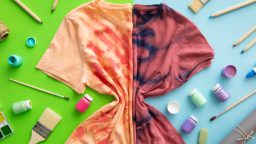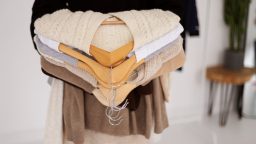Fashion is an ever-evolving reflection of culture, society, and individual expression, and each decade brought its own unique trends that defined the era. From the bold and rebellious styles of the 1960s to the extravagant and experimental fashion of the 2000s, each period has left a lasting impact on the fashion world. Let’s take a look at the key styles that defined each decade from the 1960s to the 2000s.
1960s: Mod, Bold, and Revolutionary
The 1960s were a time of change and rebellion, and this was reflected in the fashion of the era. The early part of the decade was dominated by the Mod style, which originated in London. It was all about bold geometric patterns, sleek silhouettes, and vibrant colours. Mini skirts became iconic, with British designer Mary Quant being credited with popularising the look. The shift dress, often paired with thick tights and boots, became synonymous with 60s fashion.
The influence of counterculture also had a major impact, with bohemian styles emerging in the latter part of the decade. Hippie fashion embraced free-spirited, relaxed clothing such as bell-bottom jeans, tie-dye shirts, and flowing dresses. The 1960s marked a pivotal moment in fashion, combining both bold, youthful looks and the rise of individualism.
1970s: Disco Fever and Boho Chic
The 1970s were defined by two major style movements: disco and boho chic. Disco fashion was all about glamour, with glittering fabrics, bell-bottom trousers, and platform shoes. Jumpsuits, often in metallic or sequined fabrics, became a staple in the wardrobe of anyone heading to the club. The Bee Gees and Saturday Night Fever set the tone, with shiny polyester fabrics, tight-fitting shirts, and bell sleeves dominating the scene.
At the same time, the bohemian trend, influenced by the hippie movement, took hold. This style was characterised by flowing maxi dresses, fringe, suede, and ethnic prints. Think Jane Birkin with her wicker basket bags and flower crowns, or Joni Mitchell in her relaxed, earthy outfits. The 70s also brought about the wide-brimmed hats, oversized sunglasses, and paisley prints that continue to inspire boho fashion today.
1980s: Power Dressing and Punk
The 1980s were a time of excess, and fashion mirrored this with bold, oversized silhouettes, bold colours, and extravagant designs. Power dressing became a major trend, with shoulder pads and tailored suits dominating the business and corporate scene, particularly for women. Designers like Gianni Versace and Jean-Paul Gaultier created collections that were sharp, confident, and structured. Think Dynasty and Shoulder Pads – it was all about creating a strong, formidable appearance.
Simultaneously, the punk rock movement influenced fashion with rebellious attitudes and DIY aesthetics. Leather jackets, ripped jeans, band t-shirts, and chunky boots were staples of the punk style, while colourful Mohawks, safety pins, and spiked accessories added an edge. Vivienne Westwood was at the forefront of punk fashion, creating designs that challenged traditional notions of beauty and conformity.
1990s: Grunge, Minimalism, and Hip-Hop
The 1990s saw a shift towards a more laid-back, casual style. The grunge movement, led by bands like Nirvana and Pearl Jam, embraced an undone, rebellious look with oversized flannel shirts, ripped jeans, and combat boots. The “anything goes” mentality of grunge meant that fashion was anti-glamour – unkempt, carefree, and focused on comfort.
In contrast, minimalism also came into play, with designers like Calvin Klein and Jil Sander emphasising sleek, pared-down styles. Simple slip dresses, turtlenecks, and tailored trousers were key pieces of the minimalist wardrobe. The look was clean, understated, and elegant, often relying on neutral colours and subtle accessories.
Meanwhile, the influence of hip-hop culture shaped fashion, particularly in urban areas. Baggy jeans, oversized t-shirts, and chunky gold chains were a sign of success and street credibility. Brands like Tommy Hilfiger and Ralph Lauren became associated with the growing trend of streetwear, which merged casual and luxury styles.
2000s: Y2K, Denim, and Excess
The 2000s were defined by a mix of excess and experimentation, with fashion taking a turn towards bright colours, logos, and bold trends. The Y2K (Year 2000) style embraced futuristic designs, including metallics, holographic fabrics, and low-rise jeans. The Britney Spears and Paris Hilton era brought us flashy, embellished tops, bedazzled accessories, and a love for denim. Denim skirts, low-rise jeans, and denim jackets were everywhere, often paired with crop tops, flip-flops, and chunky heels.
At the same time, the 2000s saw the rise of logos. Brands like Louis Vuitton, Gucci, and Abercrombie & Fitch became known for their prominent, logo-heavy designs, which adorned everything from handbags to hoodies. Juicy Couture velour tracksuits also became a symbol of comfort and luxury, often paired with oversized sunglasses and flip-flops.
The 2000s also embraced the “bling” aesthetic, with flashy jewellery, statement accessories, and vibrant colours. This era represented a shift toward fast fashion and instant gratification, where trends could change rapidly, and people embraced over-the-top, attention-grabbing looks.
Conclusion
Fashion through the decades has been an ever-changing reflection of society’s values, artistic movements, and technological advancements. The 60s saw youth-driven rebellion and the birth of mod fashion, while the 70s offered both disco glamour and bohemian ease. The 80s embraced excess with power dressing and punk rock defiance, and the 90s offered grunge, minimalism, and hip-hop culture as alternative style statements. Finally, the 2000s were defined by the flashy and experimental Y2K aesthetic, denim dominance, and the rise of logos.
Each decade brought about bold changes in fashion, influenced by cultural, political, and social shifts. While some trends have faded, others have been revived, showing how fashion is both cyclical and ever-evolving. Whether you’re inspired by the minimalism of the 90s or the extravagant glam of the 80s, these decades have shaped the fashion landscape we know today. So, when you’re choosing what to wear, remember that you’re not just picking an outfit—you’re participating in a rich history of fashion that spans decades.





